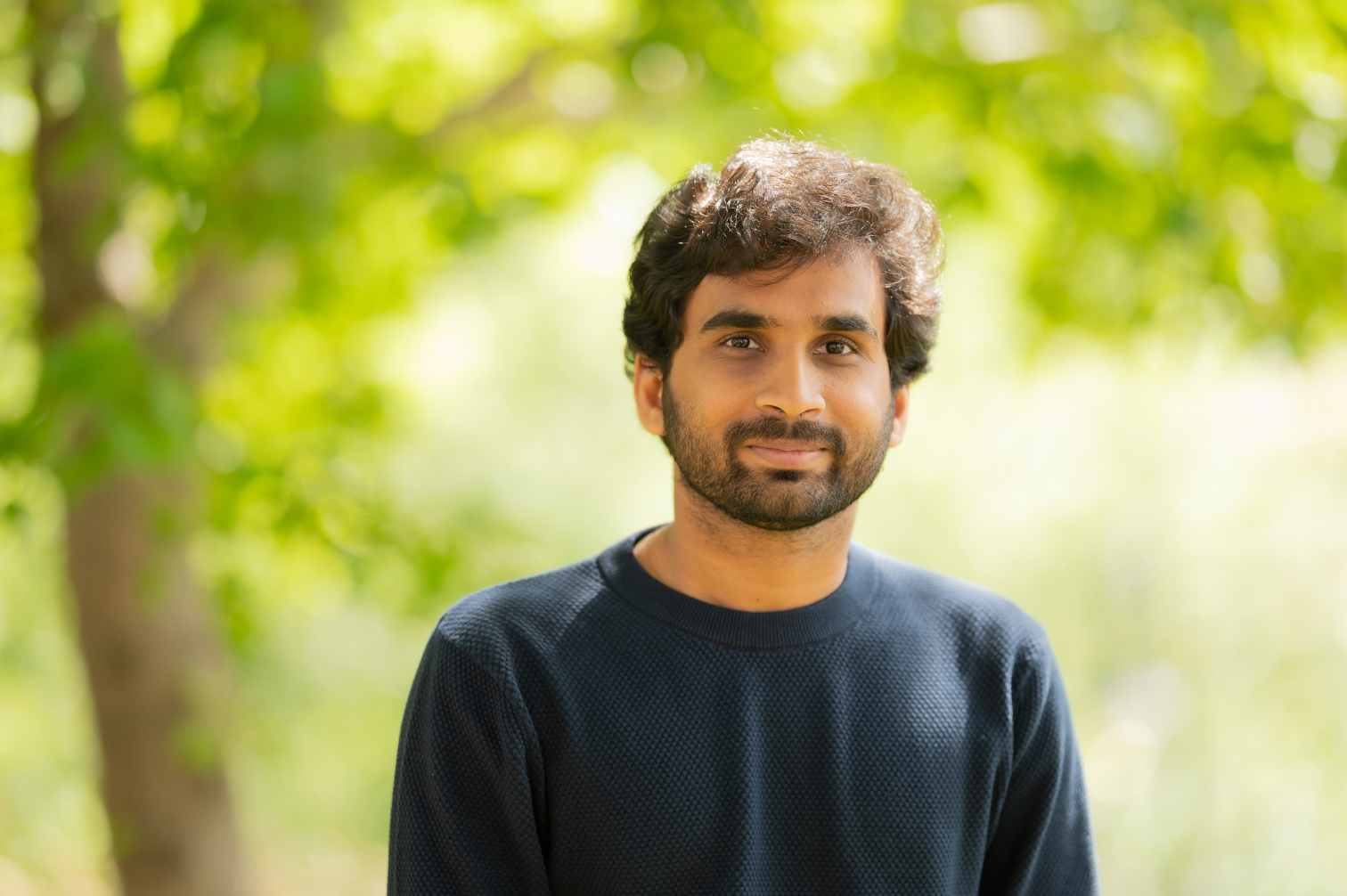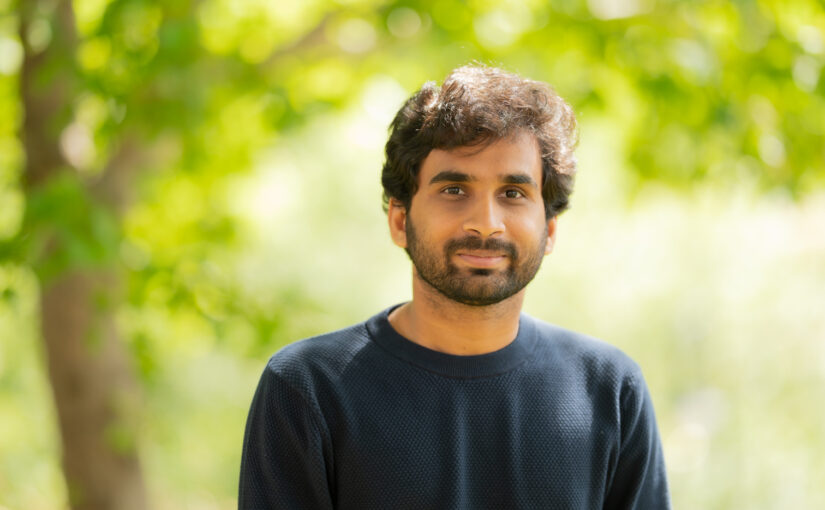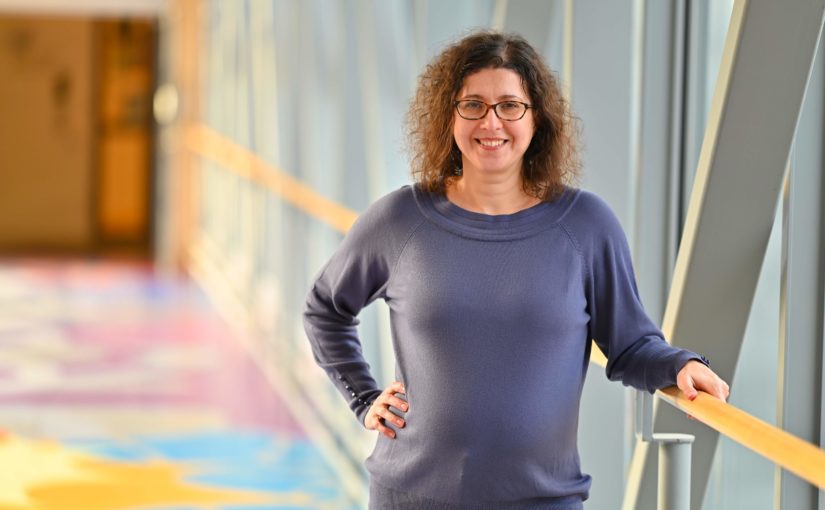Saga Helgadottir discussed her research with Curie, a magazine issued by the Swedish Research Council. The article gives examples of how AI is used in many research disciplines. Read the article on Curie’s webpage here.
News
Seminar by G. Volpe at the Department of Chemistry, University of Gothenburg, 19 Sep 2019
Soft Matter Meets Deep Learning
Giovanni Volpe
Department of Chemistry, University of Gothenburg, Sweden
19 September 2019
After a brief overview of artificial intelligence, machine learning and deep learning, I will present a series of recent works in which we have employed deep learning for applications in photonics and active matter. In particular, I will explain how we employed deep learning to enhance digital video microscopy [1], to estimate the properties of anomalous diffusion [2], and to improve the calculation of optical forces. Finally, I will provide an outlook for the application of deep learning in photonics and active matter.
References
[1] S. Helgadottir, A. Argun and G. Volpe, Digital video microscopy enhanced by deep learning. Optica 6(4), 506—513 (2019)
doi: 10.1364/OPTICA.6.000506
[2] S. Bo, F Schmidt, R Eichborn and G. Volpe, Measurement of Anomalous Diffusion Using Recurrent Neural Networks. arXiv: 1905.02038
Seminar on controlled generation of high power optical vortex arrays by Harshith Bachimanchi from IISER Pune, Faraday, 18 September 2019

Seminar by Harshith Bachimanchi from the Indian Institute of Science Education and Research, Pune (IISER Pune).
Optical vortices, beams carrying orbital angular momentum (OAM) per photon are of supreme interest in recent times for their wide variety of applications in quantum information, micro-manipulation, and material lithography [1, 2, 3]. Due to a helical phase variation in propagation, and an undefined phase at the centre, these beams have a phase singularity in their wavefront, resulting in the doughnut-shaped intensity distribution. Though the vortex beams have been widely explored in the past, the recent advancements on multiple particle trapping, single-shot material lithography, and multiplexing in quantum information [4] demand an array of optical vortices in a simple experimental scheme.
While the majority of the existing mode converters transform the Gaussian beam into a single vortex beam, the intrinsic advantage of the dynamic phase modulation through holographic technique allow the spatial light modulators (SLMs) to generate vortex arrays directly from a Gaussian beam. However, the low damage threshold of SLMs restricts their usage for high power vortex array applications.
Here, we elaborate a simple experimental scheme to generate high power, ultrafast, higher order optical vortex arrays. Simply by using a dielectric Microlens array (MLA) and a plano-convex lens we generate an array of beams carrying the spatial property of the input beam. Though we’ve verified the technique for the case of optical vortices, it holds true for a useful subset of structured optical beams. Considering the MLA as a 2D sinusoidal phase grating, we have numerically calculated the intensity pattern of the array beams in close agreement with the experimental results. We have also theoretically derived the parameters controlling the intensity pattern, size and the pitch of array and verified experimentally. The single-pass frequency doubling of the vortex array at 1064 nm in a 1.2 mm BiBO crystal produced green vortex arrays of orders as high as lsh = 12, twice the order of the pump array beam, with a conversion efficiency as high as ∼3.65% [5].
References:
- Grier, D. G. A revolution in optical manipulation. Nature 424, 810 (2003)
- Mair, A., Vaziri, A., Weihs, G. & Zeilinger, A. Entanglement of the orbital angular momentum states of photons. Nature 412, 313 (2001).
- Scott, T. F., Kowalski, B. A., Sullivan, A. C., Bowman, C. N. & McLeod, R. R. Two-color single-photon photoinitiation and photoinhibition for subdiffraction photo-lithography. Science 324, 913–917 (2009).
- Omatsu, T. et al. Metal microneedle fabrication using twisted light with spin. Opt. Express 18, 17967–17973 (2010).
- Harshith, B.S., Samanta, G.K. Controlled generation of array beams of higher order orbital angular momentum and study of their frequency-doubling characteristics. Sci Rep 9, 10916 (2019).
Place: Faraday room, Fysik Origo, Fysik
Time: 18 September, 2019, 15:00
CECAM Workshop “Active Matter and Artificial Intelligence Location”, Lausanne, Switzerland 30 September – 2 October 2019
Active Matter and Artificial Intelligence
Location : CECAM-HQ-EPFL, Lausanne, Switzerland
September 30, 2019 – October 2, 2019
Organizers:
Frank Cichos (Universität Leipzig, Germany)
Klaus Kroy (Universität Leipzig, Germany)
Fernando Peruani (Université Nice Sophia Antipolis, France)
Giovanni Volpe (University of Gothenburg, Sweden)
Website:
https://www.cecam.org/workshp1750/
Description:
Biological active matter is composed of self-propelling agents, such as molecular motors, cells, bacteria and animals [1,2], which can perform tasks and feature emergent collective behaviors thanks to their capability of sensing their environment, processing this information and exploiting it through feedback cycles [3]. These processes are intrinsically noisy [4] both at the microscale (e.g. thermal noise [5]) and at the macroscale (e.g. turbulence [6]). Therefore, through millions of years, biological systems have evolved powerful strategies to accomplish specific tasks and thrive in their environment – strategies that are encoded in their shape, biophysical properties, and signal processing networks [13].
Artificial active matter is now being explored as a powerful means to address the big challenges that our society is facing [7]: from new strategies for targeted drug delivery, to the decontamination of polluted soils, to the extraction of energy from naturally occurring out-of-equilibrium conditions. In this context, biological active matter provides an ideal source of tested ideas and approaches [8,9], which we are now trying to exploit to develop artificial systems [10,11].
However, in biological systems, there is only a limited possibility to reduce complexity and introduce controllable perturbations. Therefore, the development of computational models and of proof-of-principle experiments provides an ideal test bench to explore the origin of complexity in biological systems and to harness it for the development of new applications. For example, tuning of sensorial delays yield different behaviors in gradient fields relevant for cellular systems [12], and, inspired by neuronal networks, relevant past experience is harnessed to predict the evolution of complex systems.
In this process, we have been led to the application of machine learning to active matter. Machine learning is an abstraction of the adaption processes found in biological active matter and researchers have recently started to explore these algorithms in active matter in some pioneering works. For example, reinforcement learning [14], which reflects a type of learning based on rewards, has been used to steer the motion of microscopic particles [15,16], to understand how birds can exploit turbulent thermal air flows to soar [6], to control the motion of artificial microswimmers in complex flow patterns [17] as well as in collective field taxis [18].
We are now at a critical crossroad in the development of active matter research where biological and artificial active matter are meeting with machine learning. The specific aim of this workshop is to bring together researchers from the fields of physics, biology, mathematics and machine learning to lay the groundwork of a scientific network to address the pressing questions:
1. What can machine learning do for biological active matter? Can we gain new insight into how powerful strategies have evolved? Can we understand the role of information processing, feedback cycles and sensorial delay in these strategies?
2. What can machine learning do for artificial active matter? Can we learn new approaches towards high-impact applications? For example, how can signaling and feedback be introduced into artificial active matter?
3. What insights can active matter provide for machine learning? Can we get some insight from the natural strategies optimized by evolution?
References
[1] Ramaswamy, S., The mechanics and statistics of active matter. Annu. Rev. Condens. Matter Phys. 1, 323–345 (2010).
[2] Marchetti, M. C. et al., Hydrodynamics of soft active matter. Rev. Mod. Phys. 85, 1143–1189 (2013).
[3] Katz, Y., Tunstrøm, K., Ioannou, C. C., Huepe, C., Couzin, I. D., Inferring the structure and dynamics of interactions in schooling fish. Proc. Natl. Acad. Sci. USA 108, 18720–18725 (2011).
[4] Yates, C. A. et al., Inherent noise can facilitate coherence in collective swarm motion. Proc. Natl. Acad. Sci. USA 106, 5464–5469 (2009).
[5] Kromer, J. A., Märcker, S., Lange, S., Baier, C., Friedrich, B. M., Decision making improves sperm chemotaxis in the presence of noise. PLoS Comput. Biol. 14, e1006109–15 (2018).
[6] Reddy, G., Celani, A., Sejnowski, T. J., Vergassola, M., Learning to soar in turbulent environments. Proc. Natl. Acad. Sci. USA 113, E4877–84 (2016).
[7] Bechinger, C. et al., Active particles in complex and crowded environments. Rev. Mod. Phys. 88, 045006 (2016).
[8] Pearce, D. J. G., Miller, A. M., Rowlands, G., Turner, M. S., Role of projection in the control of bird flocks. Proc. Natl. Acad. Sci. USA 111, 10422–10426 (2014).
[9] Bierbach, D. et al., Insights into the social behavior of surface and cave-dwelling fish (Poecilia mexicana) in light and darkness through the use of a biomimetic robot. Front. Robot. AI 5, 15 (2018).
[10] Buttinoni, I. et al., Dynamical clustering and phase separation in suspensions of self-propelled colloidal particles (2017).
[11] Qian, B., Montiel, D., Bregulla, A., Cichos, F., Yang, H., Harnessing thermal fluctuations for purposeful activities: the manipulation of single micro-swimmers by adaptive photon nudging. Chem. Sci. 4, 1420–1429 (2013).
[12] Mijalkov, M., McDaniel, A., Wehr, J., Volpe, G., Engineering sensorial delay to control phototaxis and emergent collective behaviors. Phys. Rev. X 6, 011008 (2016).
[13] Palmer, S. E., Marre, O., Berry, M. J., Bialek, W., Predictive information in a sensory population. Proc. Natl. Acad. Sci. USA 112, 6908–6913 (2015).
[14] Sutton, R. S., Barto, A. G., Reinforcement learning: an introduction. MIT Press, Cambridge (1998).
[15] Colabrese, S., Gustavsson, K., Celani, A., Biferale, L., Flow navigation by smart microswimmers via reinforcement learning. Phys. Rev. Lett. 118, 158004 (2017).
[16] Muiños-Landin, S., Ghazi-Zahedi, K., Cichos, F., Reinforcement learning of artificial microswimmers. arXiv 1803.06425v2 (2018).
[17] Gustavsson, K., Biferale, L., Celani, A., Colabrese, S., Finding efficient swimming strategies in a three-dimensional chaotic flow by reinforcement learning. Eur. Phys. J. E Soft Matter 40, 313–7 (2017).
[18] Palmer, G., Yaida, S., Optimizing collective fieldtaxis of swarming agents through reinforcement learning. arXiv 1709.02379 (2017).
Agnese Callegari joins the Soft Matter Lab
Agnese Callegari joins the Soft Matter Lab on 1st September 2019, as Project Manager for the ActiveMatter ITN grant.
Presentation by Saga Helgadottir at the CECAM Workshop “Active Matter and Artificial Intelligence”, Lausanne, Switzerland, 30 September 2019
Digital video microscopy enhanced by deep learning
Saga Helgadottir, Aykut Argun & Giovanni Volpe
CECAM Workshop “Active Matter and Artificial Intelligence”, Lausanne, Switzerland
30 September 2019
Single particle tracking is essential in many branches of science and technology, from the measurement of biomolecular forces to the study of colloidal crystals. Standard methods rely on algorithmic approaches; by fine-tuning several user-defined parameters, these methods can be highly successful at tracking a well-defined kind of particle under low-noise conditions with constant and homogenous illumination. Here, we introduce an alternative data-driven approach based on a convolutional neural network, which we name DeepTrack. We show that DeepTrack outperforms algorithmic approaches, especially in the presence of noise and under poor illumination conditions. We use DeepTrack to track an optically trapped particle under very noisy and unsteady illumination conditions, where standard algorithmic approaches fail. We then demonstrate how DeepTrack can also be used to track multiple particles and non-spherical objects such as bacteria, also at very low signal-to-noise ratios. In order to make DeepTrack readily available for other users, we provide a Python software package, which can be easily personalized and optimized for specific applications.
Saga Helgadottir, Aykut Argun & Giovanni Volpe, Optica 6(4), 506—513 (2019)
doi: 10.1364/OPTICA.6.000506
arXiv: 1812.02653
GitHub: DeepTrack
03:40 PM–04:00 PM, Monday, September 30, 2019
Presentation by Saga Helgadottir at the AI for Health and Healthy AI conference, Gothenburg, Sweden, 30 August 2019
Digital video microscopy enhanced by deep learning
Saga Helgadottir, Aykut Argun & Giovanni Volpe
AI for Health and Healthy AI conference, Gothenburg, Sweden
30 August 2019
Single particle tracking is essential in many branches of science and technology, from the measurement of biomolecular forces to the study of colloidal crystals. Standard methods rely on algorithmic approaches; by fine-tuning several user-defined parameters, these methods can be highly successful at tracking a well-defined kind of particle under low-noise conditions with constant and homogenous illumination. Here, we introduce an alternative data-driven approach based on a convolutional neural network, which we name DeepTrack. We show that DeepTrack outperforms algorithmic approaches, especially in the presence of noise and under poor illumination conditions. We use DeepTrack to track an optically trapped particle under very noisy and unsteady illumination conditions, where standard algorithmic approaches fail. We then demonstrate how DeepTrack can also be used to track multiple particles and non-spherical objects such as bacteria, also at very low signal-to-noise ratios. In order to make DeepTrack readily available for other users, we provide a Python software package, which can be easily personalized and optimized for specific applications.
Friday, August 30, 2019
Saga Helgadottir, Aykut Argun & Giovanni Volpe, Optica 6(4), 506—513 (2019)
doi: 10.1364/OPTICA.6.000506
arXiv: 1812.02653
GitHub: DeepTrack
Seminar by G. Volpe at MTL BrainHack School 2019, Montreal, Canada, 22 August 2019
Be friendly to your users:
Add comments and tutorials to your code
Giovanni Volpe
MTL BrainHack School 2019, Montreal, 22 August 2019
https://brainhackmtl.github.io/school2019/
Talk by G. Volpe at SPIE OTOM XVI, San Diego, 14 Aug 2019
FORMA: a high-performance algorithm for the calibration of optical tweezers
Laura Pérez-García, Alejandro V. Arzola, Jaime Donlucas Pérez, Giorgio Volpe & Giovanni Volpe
SPIE Nanoscience + Engineering, Optical trapping and Optical Manipulation XV, San Diego (CA), USA
11-15 August 2019
We introduce a powerful algorithm (FORMA) for the calibration of optical tweezers. FORMA estimates accurately the conservative and non-conservative components of the force field with important advantages over established techniques, being parameter-free, requiring ten-fold less data and executing orders-of-magnitude faster. We demonstrate FORMA performance using optical tweezers, showing how, outperforming other available techniques, it can identify and characterise stable and unstable equilibrium points in generic force fields.
Reference: Pérez-García et al., Nature Communications 9, 5166 (2018)
doi: 10.1038/s41467-018-07437-x
Plenary Presentation by G. Volpe at SPIE Nanoscience + Engineering, San Diego, 12 Aug 2019
Optical forces go smart
Giovanni Volpe
Plenary Presentation
SPIE Nanoscience + Engineering, San Diego (CA), USA
11-15 August 2019
Optical forces have revolutionized nanotechnology. In particular, optical forces have been used to measure and exert femtonewton forces on nanoscopic objects. This has provided the essential tools to develop nanothermodynamics, to explore nanoscopic interactions such as critical Casimir forces, and to realize microscopic devices capable of autonomous operation. The future of optical forces now lies in the development of smarter experimental setups and data-analysis algorithms, partially empowered by the machine-learning revolution. This will open unprecedented possibilities, such as the study of the energy and information flows in nanothermodynamics systems, the design of novel forms of interactions between nanoparticles, and the realization of smart microscopic devices.

